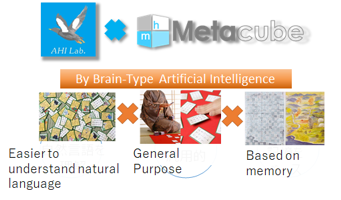Release 15th May, 2020
Please be informed that our representative, Haruki ito posted some thoughts on LikedIn about indicated on the subject. Due to posting restriction there, the article had to be divided into three parts, so let us please summarize into one column here.
When I was very young, I met Graph Theory and chose it as the main theme of graduate study of communication engineering degree. At that time, our shared UNIX workstation had less power, so we had to take one week for a simulation of max clique extraction from a random graph with only 500 vertices and unweighted, undirectional edges.
Besides the computing speed in old time, the theory can apply to many thing, not only the extraction of clique/independent set, also the computation of centrality, similarity, betweenness, and so on. Everything is being used for today's network-modeled analysis and pleasure to review it expands.
My interest in last three years was in applying it for Privacy Protection. Reviewing the battle formation of attacking threat models, and protection methods and strength indexes such as k-anonymity, t-diversity, t-closeness, etc. collide each other is really thrilling but actually practical for my business - Personal Health Record designing.
Representing the each formation into graph would be the good way to visualize to make the good understanding of trade-off between privacy level setting and evaluation of data use for the providers and demanders.
(Link to one of columns about PHR development overview - Login to LinkedIn may be required)
About Graph Theory, Graph Database and Brainscience Research #1
Applying Graph Database to full implementation of Graph Theory would require many function of geometric computation of clique, centrality, filtering and layering for the dynamic and clustered information structure, but thanks to the inventor of the database, I may no more be tied up with the programming of matrices and recursive algorithms like I was doing at the school.
Also I recently work with Mr.Obayashi and helping his brain connection and functional inheritance from nematode neuron research what is finally targeting the realization of Genral Artificial Intelligence (AGI), in belief that demystifying the firing pattern and the information transferred between the neurons would surely help simplify the realization of AGI and low-power-requiring/self-organizing memory system.
(Link to Mr.Obayashi's past post at SfN on LinkedIn)
Regarding My Participation and Presentation at SfN 2019
I will do it in my way, applying graph theories in the corporation with any Graph Database guy. The use of Graph Database requires the broad representation ways of relationship between the nodes and I'm still in the stage of selection, from the view point not only of functionality, but also of economics and ease of partnership with them.
From the recent study, it's getting clear the possibility to predict neural firing timing and patterns from the topology of brain networks as you can see in some samples here.
Also the outcomes from studies involving functional MRI would help as below;
- Application of Graph Theory for Identifying Connectivity Patterns in Human Brain Networks: A Systematic Review
- Graph theory methods: applications in brain networks
Analysis of two hundred billions' neurons (node) and hundred trillions' synapses (edges) would not easy in computational resources and implementation power, but combining this works with Mr.Obayashi's L4t4 circuit hypothesis would make this trial simpler and well-focused, and the research should be accelerated.
(Link to brain research release for AGI development in the cooperation of Metacube Co., Ltd. and AHIL below)
We are welcome to receive any inquiry about these researches in any time and looking forward to working with you.
Haruki Ito



